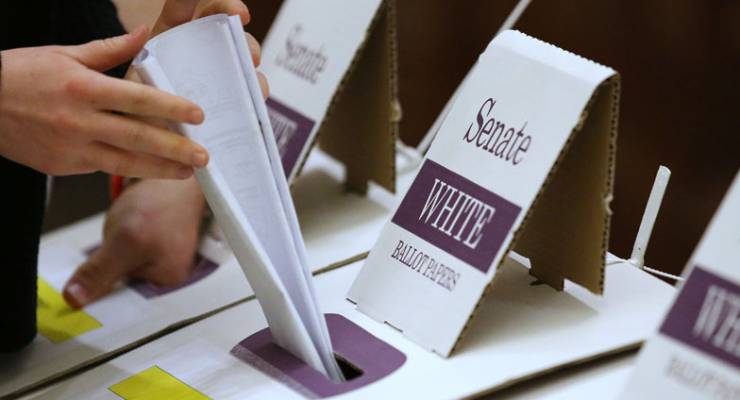
On March 18, 2016, the Commonwealth Electoral Amendment Bill 2016 passed both houses of Parliament. This was when the AEC had its first clear view of what lay ahead. Electoral commissioner Tom Rogers told the Finance Department a minimum of three months “would allow for the necessary system development and implementation” before Senate counting could begin. The AEC got its three months, but what exactly did it develop? And how transparent is it?
Computer experts will tell you that three months is not a lot of time to develop from scratch a complex system as complex as the one needed to capture and count Senate ballot papers. Crikey has been advised by an election technology expert who has seen the system that AEC did the sensible thing: they called in a company that had the technology and experience in handling large quantities of paper securely, scanning and extracting data from hand-written numbers — Fuji Xerox.
To get things rolling quickly the AEC formed a partnership (the AEC’s own description of the relationship) with Fujitsu. The arrangement seemed to be that the AEC defined the process and oversees the operation of Fujitsu’s technology and staff. It appears the AEC does not own or even have hands-on control over the technology or the data entry staff. This is not ideal for an electoral computer system that holds all Australia’s Senate ballots, but it is easy to see why the AEC did this, given the short time frame available to develop the system.
The AEC/Fujitsu partnership has implemented a very impressive system. The system both scans and interprets preference marks and also requires operators to key the preferences of every Senate ballot. The output of both these streams is then compared. If they match, then the ballot is deemed final and the resultant data is ready for counting; if they do not, the scanned image is examined by an operator and the errant data corrected, and then it is ready for counting. All this is done with scrutineers present who can see what the operator sees and intercede if they believe an operator interpretation is incorrect.
It sounds like a great system, and it is, for getting data from a ballot paper into a computer. But the burning question is whether the data in the computer and more importantly sent to the final count is exactly as seen on the ballots and approved by operators or captured by scanning.
Let me make clear at this point, we are NOT suggesting any fraud or incompetency on the part of the AEC or Fujitsu, both are competent and trustworthy organisations. What we need to consider is whether this system as it stands will maximise the public’s trust in the election outcome. The AEC’s own 2016 Federal Election Service Plan says: “The AEC is committed to delivering processes that uphold electoral integrity and engender voter and stakeholder trust in the result and to ensuring the security and sanctity of the ballot paper at all times.”
So how can the AEC best achieve this? The only way to do this is to check independently the ballot input with the computer output. This means randomly selecting batches of input ballots and compare them with the output preference file data for the same ballots. This is best done by two people cross calling the preference marks from the ballots to a report of preference marks from the file used for the final count. This must be able to be witnessed by a scrutineer. This is a simple and relatively inexpensive check and can even be done after the Senate distribution of preferences count is completed so the declaration will not be held up.
A small price to pay to ensure public trust.
The diagram below shows the flow of the count. The dashed boxes identify information or processes currently not included in the proposed count process but should be. The additional data that should be published is first preference data from regional count centres. The full preference file should also be published showing each preference by polling place/vote type, batch and ballot number. Additionally, a process is needed to check of input ballots to output data.
Update: This article originally stated it was Fujitsu not Fuji Xerox responsible for the Senate ballot scanner. This has been corrected.








Crikey is committed to hosting lively discussions. Help us keep the conversation useful, interesting and welcoming. We aim to publish comments quickly in the interest of promoting robust conversation, but we’re a small team and we deploy filters to protect against legal risk. Occasionally your comment may be held up while we review, but we’re working as fast as we can to keep the conversation rolling.
The Crikey comment section is members-only content. Please subscribe to leave a comment.
The Crikey comment section is members-only content. Please login to leave a comment.